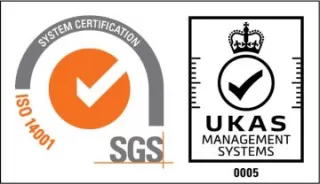
External Wall Insulation Vs Internal Wall Insulation
External Wall Insulation Vs Internal Wall Insulation
External Wall Insulation (EWI) is insulation fitted to the outside of your house. It saves energy, reduces fuel costs and can add value to your house.
Internal Wall Insulation (IWI) is insulation fitted on the inside of your walls. It also saves energy and reduces fuel costs
The Main Considerations:
- EWI will improve the look of your house often adding financial value.
- IWI is cheaper on its own than EWI, but with the added costs of redecorating and replacing any fittings, skirting boards or other elements, it normally ends up costing a lot more.
- For IWI, rewiring will be necessary, light switches have to be moved and decorative features like skirting boards can cause problems.
When to have External Wall Insulation:
- If you want to improve or enhance the look of the outside of your property
- If you want to minimise disruption during the install
- If you want to weather proof your property
- If you want to increase noise insulation
When to have Internal Wall Insulation:
- If you only want to insulate one or two rooms
- If you cannot have EWI due to planning constraints or access requirements (e.g. the property has no external space surrounding it and infringes onto a public walkway or road)
- If your internal walls have little or no features (e.g. radiators, light switches, etc)
- If you don’t mind a bit of disruption in the house
- If you don’t need extra weather protection
- If you don’t mind reducing the size of your rooms
- If you are prepared to pay more for redecorating
| Features | External Wall Insulation | Internal Wall Insulation |
|---|---|---|
| Disruption in the home | Little disruption as all work is on the outside of the property. | More disruptive as access will be required to treat internal walls. |
| Rewiring | No rewiring needed. Although some enabling work may be required (e.g. repositioning telephone cables, satellite dishes, etc). | Electrical sockets and light switches will need to be moved and reconnected. |
| Wall Coverage | Total wall coverage. | It is not always possible to cover all of the walls, so there may be cold spots. |
| Living space impact | None. | Reduces internal living space; character features like skirting boards, door frames and picture rails may also cause problems. |
| Condensation | Helps prevent damp and condensation. | Requires a vapour control layer which can be made vulnerable if a resident puts a nail in the wall without knowing. |
| Cost | Normally less expensive. | Normally more expensive due to redecorating. |
| Other Considerations | May need planning permission. | Reduces the size of rooms. |
| Energy Saving | Detached House – 1,870kg CO₂/year Semi Detached House – 1,120kg CO₂/year Mid Terrace House – 690kg CO₂/year |
Detached House – 1,870kg CO₂/year Semi Detached House – 1,120kg CO₂/year Mid Terrace House – 690kg CO₂/year |
| Cost Saving | Detached House – £425 Semi Detached House – £255 Mid Terrace House – £160 |
Detached House – £425 Semi Detached House – £255 Mid Terrace House – £160 |






